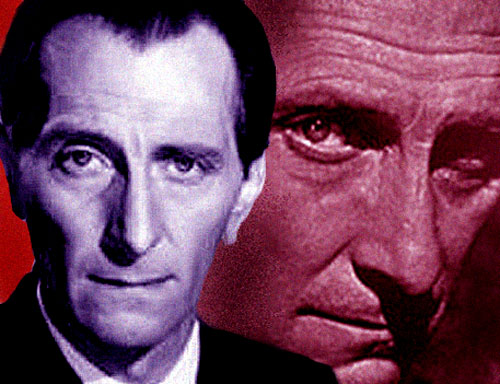mark mclaughlin
FOUR-LETTER WORD BEGINNING WITH `F'
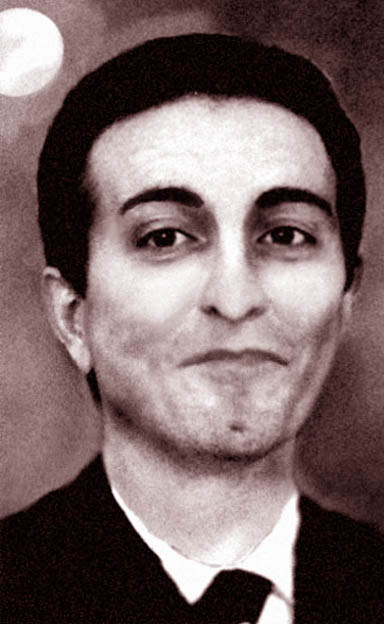
Mark McLaughlin's fiction, nonfiction and poetry have appeared in hundreds of magazines, anthologies, and websites, including The Living Dead 2, Cemetery Dance, Dark Arts, Midnight Premiere, Fangoria, Horror Garage, FilmFax, Shroud Magazine, ChiZine.com, The Black Gate, Galaxy, all three Bending the Landscape volumes, and two volumes each of The Best of the Rest, The Best of HorrorFind, and The Year's Best Horror Stories, as well as The Book of All Flesh, its two companion volumes, and The Best of All Flesh. Collections of his fiction include Death Creeps In On Velvet Paws, Twisted Tales For Sick Puppies, Raising Demons For Fun and Profit, Slime After Slime, Pickman's Motel, Motivational Shrieker, and At the Foothills of Frenzy (with co-authors Shane Ryan Staley and Brian Knight). He is the co-author, with Rain Graves and David Niall Wilson, of The Gossamer Eye, which won a Bram Stoker Award for Poetry. His collaborative novel with Michael McCarty, Monster Behind the Wheel, was a Bram Stoker Award Finalist for Best First Novel. Mark's works can be found at www.MerchantsKeep.com, www.Horror-Mall.com, and the Anthologies Section of www.GenreMall.com. Visit Mark on the web at www.facebook.com/MarkMcLaughlinMedia, www.myspace.com/monsterbook, and www.youtube.com/mcmonsterbook.
The Face of Fear:
A Salute to Peter Cushing
Welcome yet again to my online movie mausoleum, where we explore various fears as they are depicted in the cinema of the macabre.
Anyone who has watched a lot of vintage British horror movies is familiar with the face of Peter Cushing (1913-1994). His face has terrified millions of movie-goers, but he was not an ugly man. Far from it! While he usually projected a grim demeanor, one would still call him handsome, and when he smiled, he came across as likeable and charming.
But more often than not in his movies, his compelling face was set in dire expressions capable of sending shivers down the spines of even the most jaded horror aficionados. He was a sturdy, lean man with a gaunt, aristocratic visage. His bright, intelligent eyes were deep-set, with a penetrating gaze that could be startling in its intensity.
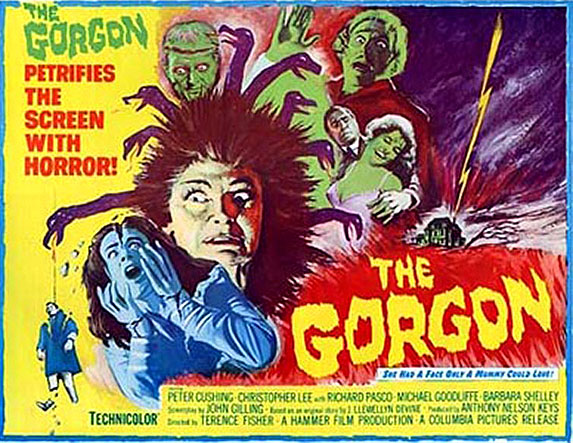
Cushing had a high forehead and a square jaw -- noble features befitting a leading man. But the downturned set of his mouth, combined with his thin lips, sometimes gave his face a cold, almost cruel quality. Clearly, a man with a face like that was born to star in horror movies.
From those comments, you'd probably deduce that he always played the villain. But he played many heroes, too. He smiled more when he played the hero.
Let's take a look at some of his most memorable horror roles.
In The Gorgon (1964), Cushing played Dr. Namaroff, a physician in a remote Germanic village which is inexplicably haunted by a snake-haired Greek Gorgon. Apparently she visited one of the castles centuries ago and decided to haunt it.
It took me a while to determine whether Cushing's character is a hero or a villain. It turns out his relationship with the Gorgon is quite complex, and circumstances dictate that he must be a villain to protect his problematic sweetie. Now, most of us would avoid being in a relationship with a Gorgon, so clearly Cushing enjoyed playing characters who were not afraid of taking risks.
Alas, the villainous Dr. Namaroff does eventually gaze into the eyes of the Gorgon. When he does, the look upon his face is one of terror... and sadness, too. He'd spent the entire movie protecting the Gorgon, and now that his demise is on the immediate horizon, he realizes the foolishness of his actions.
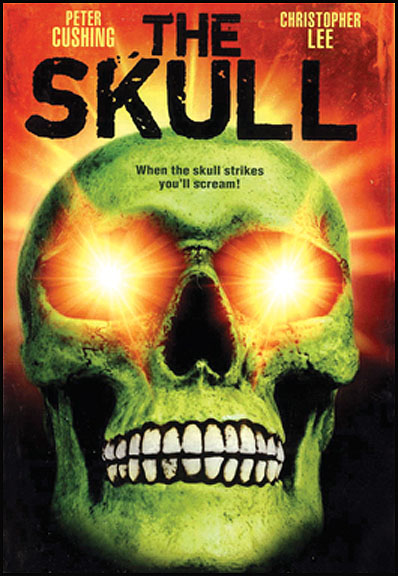
In The Skull (1965), Cushing played Christopher Maitland, a collector of rare occult curios. In this film, he is not the villain -- but he isn't exactly a hero. Quite simply, he is a victim. He purchases the skull of the Marquis de Sade from a sleazy colleague and soon, this wicked cranial keepsake makes his life miserable.
The skull gives him surreal nightmares and gradually takes over his existence, forcing him to embrace the powers of evil. As the skull's victim, Cushing's face is often set in expressions of fear and horror.
What a pity he brought all that doom upon himself by purchasing that skull. He should have used the money for something more practical, like... well, anything else, really. Rent. Food. Some nice slippers.
Cushing played kindly time-traveler Dr. Who in Dr. Who and the Daleks (1965) and Daleks' Invasion Earth: 2150 A.D. (1966) and while those aren't horror movies, he does fight the horrific Daleks -- merciless aliens who seek to destroy any living thing that isn't one of them. Daleks may appear to be giant salt shakers on wheels, but despite their low-tech looks, they are still malevolent killing machines.
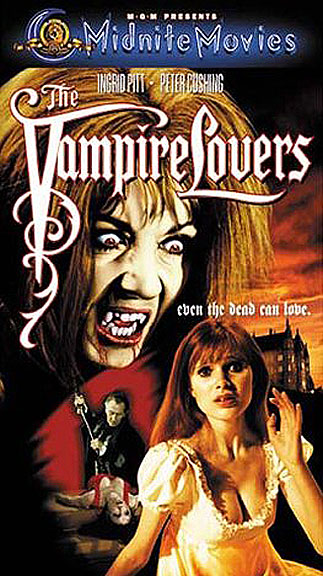
Cushing was excellent in the role of General von Spielsdorf in The Vampire Lovers (1970), a sexy period piece starring the beautiful Ingrid Pitt as the vampire Carmilla. The General's nubile daughter is stalked by Carmilla, and in this one, Cushing is all paternal care and steely determination. No one sucks the blood out of the General's daughter and gets away with it!
That strong sense of determination was abundant in Cushing's most famous characters for Hammer Films -- namely, the villain, Baron Frankenstein, and the hero, Professor Van Helsing.
Cushing did a series of Frankenstein movies for Hammer, and unlike the Universal Frankenstein series, Hammer concentrated on the Baron as the pivotal character instead of the monster. The series started with The Curse of Frankenstein (1957), and continued straight into The Revenge of Frankenstein (1958), in which the Baron himself is subjected to a successful brain transplant.
The other movies in the series sported such shocking and progressively longer titles as The Evil of Frankenstein (1964), Frankenstein Created Woman (1967), Frankenstein Must Be Destroyed (1969), and Frankenstein and the Monster From Hell (1974).
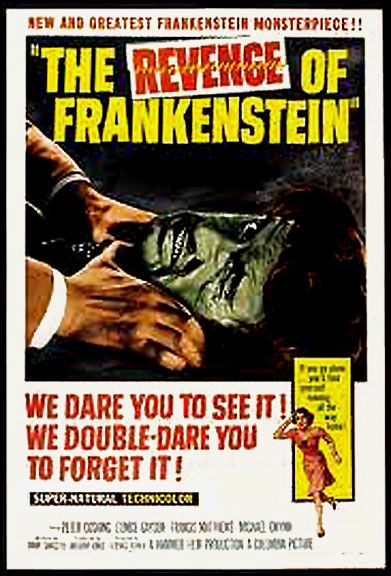
In each one, the Baron advances strange new scientific theories, all of which concern the reanimation of dead tissue in one way or another. In the earlier ones, the Baron maintains some dignity as a scientist who wants to explore forbidden visas of knowledge. As the series progresses, he becomes more jaded and cruel, and even rapes a proper young lady in Frankenstein Must Be Destroyed.
In Frankenstein and the Monster From Hell, the Baron is the head physician at an insane asylum, and for the most part, he considers the inmates to be his own personal farm of transplant parts. By this time, the Baron has degenerated into a sort of macabre thrill-seeker, obsessed with performing bizarre surgeries and resurrections, just because he can.
Cushing first played Professor, or sometimes Doctor, Van Helsing in Horror of Dracula (1957). His intense determination to hunt down and kill Dracula is glorious to behold.
Van Helsing does indeed kill Dracula but darn it, the Count always manages to come back to life. And so Van Helsing pursues Dracula from movie to movie to movie. Other movies in the Hammer Films Dracula series featuring Cushing were The Brides of Dracula (1960 -- Dracula doesn't appear in this one, and there aren't any vampire brides, despite the totally misleading title), Dracula A.D. 1972 (1972), The Satanic Rites of Dracula (1973), and The Legend of the 7 Golden Vampires (1974), later re-edited into the inferior The 7 Brothers Meet Dracula.
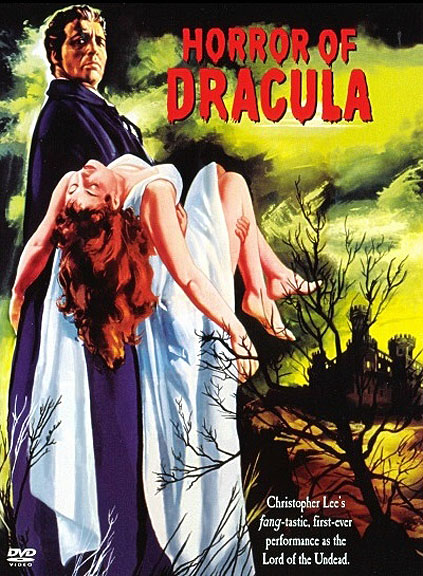
In The Legend of the 7 Golden Vampires, Van Helsing visits the Far East, where Dracula is starting up a new base of operations. The Count has taken over the body of an Asian magician so he can blend in with the local populace -- and also so he can lead the magician's band of skull-faced zombie followers.
As if Dracula and an army of zombies aren't enough, Van Helsing and his crew also have to fight a league of six Asian vampires (there used to be seven, but one was destroyed before Van Helsing arrived on the scene).
While his crew is a great help, Van Helsing doesn't need them to foil his ancient enemy. In the end, Van Helsing single-handedly fights Dracula to the death. The mighty king-vampire expires in grand gruesome style, as is his way. After so many movies, Dracula has had a lot of practice in the fine art of kicking the bucket.
In Madhouse (1974), Cushing turned in a fine performance as Herbert Flay, an actor-turned-TV/movie-writer whose best friend is Paul Toombs, horror star extraordinaire, played with panache by Vincent Price.
We learn that Toomb's greatest role is Dr. Death, an insane villain who kills off fair maidens in movie after movie. Unfortunately, when Toomb's bride-to-be is murdered, the actor goes mad because he believes he killed his beloved while possessed by the persona of Dr. Death.
Toombs spends some time in an asylum and is eventually deemed sane. When he is released, he stays with Herbert, and Cushing's face is filled with kindness as he offers Toombs care and sympathy.
Toombs is offered the chance to play Dr. Death again on TV and so he does. But soon, people around him... especially pretty young women... begin to die. When Toombs takes his life, the part of Dr. Death goes to Herbert, whose kindness to Toombs was all an act. Herbert had perpetrated the killings in a bold, evil plan to drive Toombs mad again.
But then Toombs returns, having faked his own death. He confronts Herbert and the writer's real personality, cruel and treacherous as it is, comes forth. This movie is greatly enhanced by Cushing's ability to play both heroes and villains convincingly. In case you're wondering if I've given away the ending, don't worry: the movie still has more surprises to spring on you before the credits roll.
Cushing's one-of-a-kind presence gave all his horror movies a sense of style and menace you won't find in a lot of today's horror films. If you are not familiar with the films of Peter Cushing, I urge you to seek them out and enjoy them. Cushing also did lots of other movies that I didn't mention, so seek those out, too!
END













